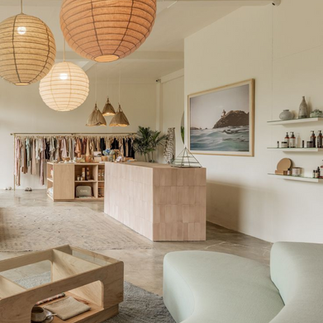The Importance of Designing Your Retail Store to Reflect Your Brand
- jrvisualdesigns
- Mar 6
- 4 min read
When customers step into your store, their first impression isn’t just about your products—it's about your brand. Everything from the layout, color scheme, lighting, and decor communicates something about who you are as a business. Designing your retail space to reflect your brand identity is crucial for creating an immersive experience, building customer trust, and driving sales.
Here’s why it’s essential to align your retail design with your brand:
1. First Impressions Matter
In retail, first impressions are everything. A well-designed store that reflects your brand identity sets the tone for the customer experience. Whether your brand is sleek and modern, cozy and rustic, or vibrant and playful, your store design should immediately convey that personality. A mismatch between your brand's identity and your store’s appearance can create confusion and leave customers with the wrong impression.
For example, a luxury brand with high-end products displayed in a cluttered or outdated space might confuse shoppers or lead them to believe the brand lacks attention to detail. On the other hand, a brand known for creativity and playfulness can lose its spark in a plain, uninspiring environment. Your store design is the first step in telling your brand's story, so make it count.
2. Enhancing the Customer Experience
The physical layout and flow of your retail space impact how customers navigate the store and interact with your products. An intentional design can guide customers effortlessly through your space, showcasing key items and encouraging them to spend more time browsing. When your design reflects your brand, it adds another layer to the shopping experience.
For example, if your brand promotes sustainability, integrating eco-friendly design elements, like natural materials and energy-efficient lighting, can enhance your message. For a tech-forward brand, incorporating interactive digital displays or modern finishes can further engage customers, reinforcing what your brand stands for. The goal is to create a seamless experience that reinforces your values and encourages customers to connect with your brand on a deeper level.
3. Building Emotional Connections
Your retail design has the power to evoke emotions that resonate with your customers. By aligning the store's aesthetics with your brand’s values, you create a space that not only appeals to customers but also fosters an emotional connection. This connection is key to building customer loyalty.
Think about the colors, textures, and lighting in your space. Each element has the potential to evoke a specific feeling. For instance, soft lighting and earthy tones can create a calm, welcoming atmosphere for a wellness brand, while bold colors and dynamic lighting can energize customers in a sportswear store. These emotional cues help shoppers associate your brand with the feelings they experience in your store, making them more likely to return.
4. Silent Selling through Design
A well-designed retail store is a powerful silent selling tool. By incorporating branded design elements like signage, displays, and focal points, you can guide customers’ attention toward specific products or promotions without saying a word. This type of subtle marketing works best when it's in line with your brand's overall aesthetic and messaging.
For example, high-quality displays for luxury items or unique shelving for artisanal goods can enhance the perceived value of the products. A cohesive design strategy allows your products to shine and be presented in a way that speaks directly to your target audience. In a well-designed space, customers are more likely to engage with products they might not have noticed otherwise.
5. Differentiating Your Brand
In today’s competitive retail environment, it’s not enough to just sell a product—you need to sell an experience. Store design is one of the most effective ways to differentiate your brand from competitors. A thoughtfully designed retail space makes your brand memorable and gives customers a reason to choose you over others.
When customers walk into your store and instantly recognize your brand identity through the design, they’re reminded of what makes your business unique. This could be through custom art, unique fixtures, or even specific scents associated with your brand. All of these elements work together to create an experience that customers can’t get anywhere else.
Conclusion
Designing your retail store to reflect your brand identity is about more than just aesthetics—it’s about creating an immersive experience that resonates with your target audience. From first impressions to emotional connections, your store’s design plays a critical role in shaping customer perceptions and building loyalty. A well-designed retail space that aligns with your brand will not only enhance the customer experience but also set your business apart in a crowded market.
By investing in a thoughtful, branded store design, you're not just decorating a space—you’re telling your brand’s story and inviting customers to be a part of it.

Not sure that your store embodies your brand? JR can help! We offer comprehensive design services that ensures your store design reflects the brand you want to portray.
The DIY Design is available virtually and world wide and provides a complete start-to-finish service that includes a professionally designed brand for a new build or renovation of the current space utilizing the expertise of retail background professionals that ensures all details are covered. We work with you to bring your vision to life while giving you a functional space for the day-to-day operations of your business.
Working with retail professionals + designers ensures that your space is aesthetically appealing and incorporates the fixtures and visuals to showcase and market your merchandise.



















Comments